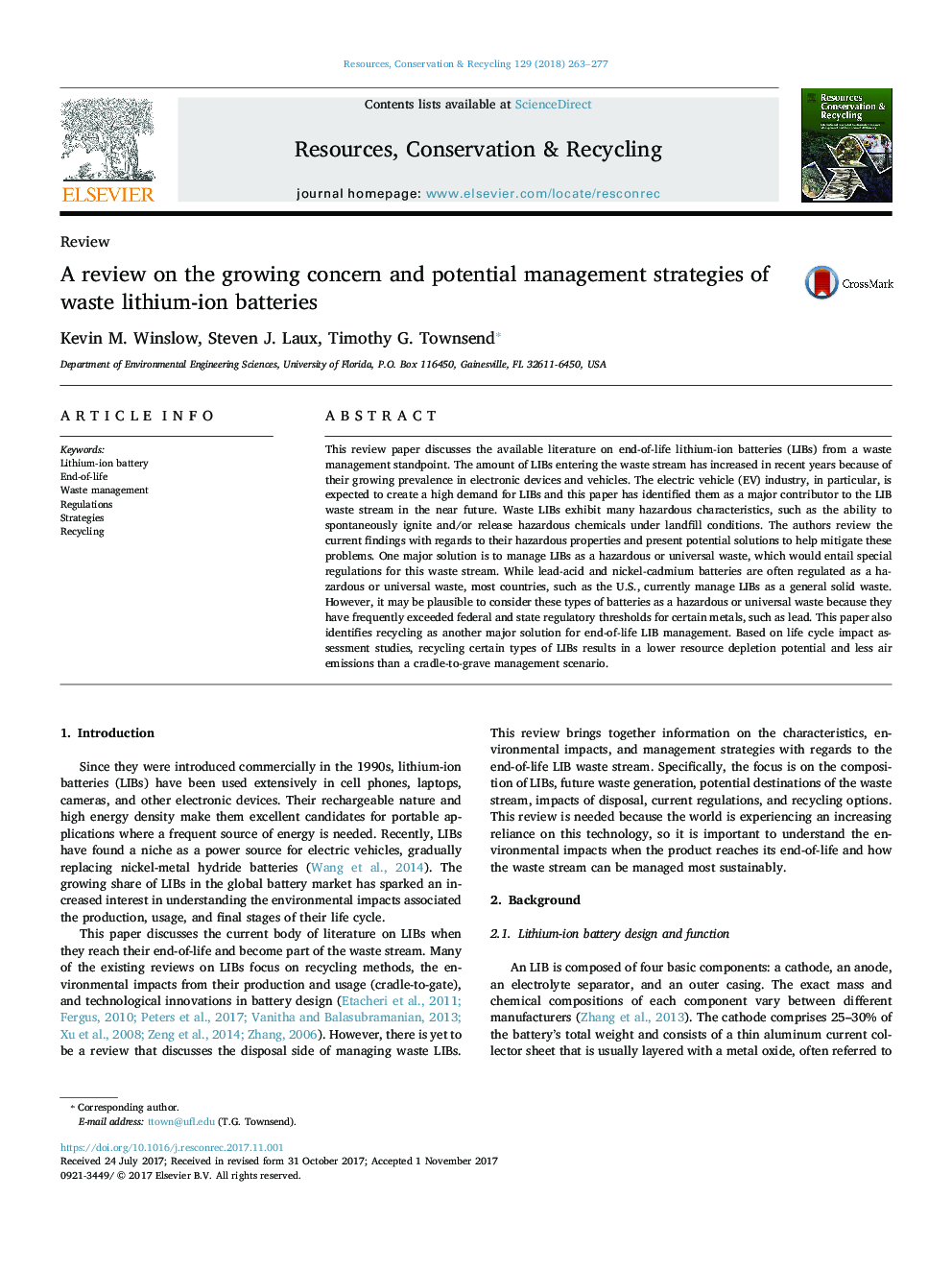| کد مقاله | کد نشریه | سال انتشار | مقاله انگلیسی | نسخه تمام متن |
|---|---|---|---|---|
| 7494556 | 1485663 | 2018 | 15 صفحه PDF | دانلود رایگان |
عنوان انگلیسی مقاله ISI
A review on the growing concern and potential management strategies of waste lithium-ion batteries
ترجمه فارسی عنوان
بررسی در مورد نگرانی های رو به رشد و راهبردهای مدیریت بالقوه باتریهای لیتیوم یونی
دانلود مقاله + سفارش ترجمه
دانلود مقاله ISI انگلیسی
رایگان برای ایرانیان
کلمات کلیدی
باتری لیتیوم یون، پایان زندگی، مدیریت زباله، آئین نامه، استراتژی ها، بازیافت،
موضوعات مرتبط
مهندسی و علوم پایه
مهندسی انرژی
انرژی های تجدید پذیر، توسعه پایدار و محیط زیست
چکیده انگلیسی
This review paper discusses the available literature on end-of-life lithium-ion batteries (LIBs) from a waste management standpoint. The amount of LIBs entering the waste stream has increased in recent years because of their growing prevalence in electronic devices and vehicles. The electric vehicle (EV) industry, in particular, is expected to create a high demand for LIBs and this paper has identified them as a major contributor to the LIB waste stream in the near future. Waste LIBs exhibit many hazardous characteristics, such as the ability to spontaneously ignite and/or release hazardous chemicals under landfill conditions. The authors review the current findings with regards to their hazardous properties and present potential solutions to help mitigate these problems. One major solution is to manage LIBs as a hazardous or universal waste, which would entail special regulations for this waste stream. While lead-acid and nickel-cadmium batteries are often regulated as a hazardous or universal waste, most countries, such as the U.S., currently manage LIBs as a general solid waste. However, it may be plausible to consider these types of batteries as a hazardous or universal waste because they have frequently exceeded federal and state regulatory thresholds for certain metals, such as lead. This paper also identifies recycling as another major solution for end-of-life LIB management. Based on life cycle impact assessment studies, recycling certain types of LIBs results in a lower resource depletion potential and less air emissions than a cradle-to-grave management scenario.
ناشر
Database: Elsevier - ScienceDirect (ساینس دایرکت)
Journal: Resources, Conservation and Recycling - Volume 129, February 2018, Pages 263-277
Journal: Resources, Conservation and Recycling - Volume 129, February 2018, Pages 263-277
نویسندگان
Kevin M. Winslow, Steven J. Laux, Timothy G. Townsend,
